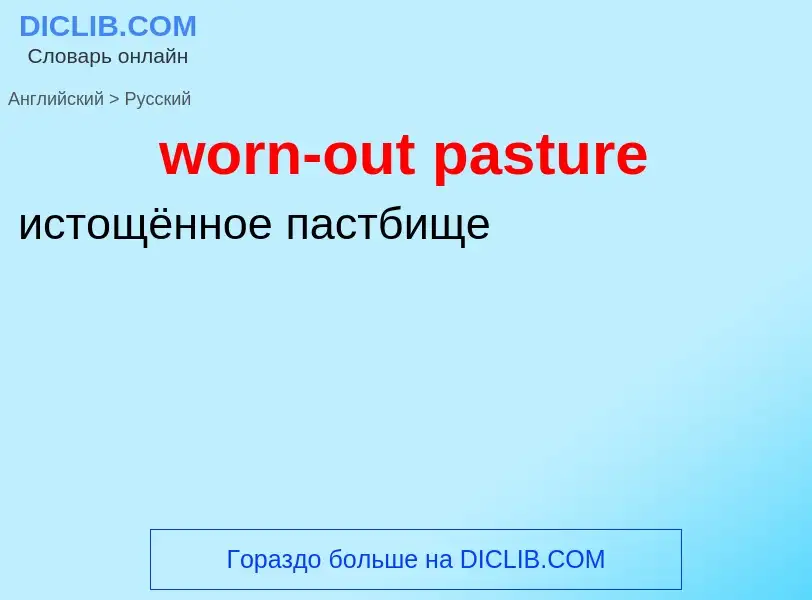Translation and analysis of words by ChatGPT artificial intelligence
On this page you can get a detailed analysis of a word or phrase, produced by the best artificial intelligence technology to date:
- how the word is used
- frequency of use
- it is used more often in oral or written speech
- word translation options
- usage examples (several phrases with translation)
- etymology
worn-out pasture - translation to russian
['pɑ:stʃə]
общая лексика
пастбище
выгон
выпас
подножный корм
выгул
выгульный
выпасти
Смотрите также
существительное
['pɑ:stʃə]
общая лексика
подножный корм
пастбище
выгон
выпас
пастбище, выгон
глагол
общая лексика
пасти скот
пастись
пасти(сь)
общая лексика
пастьба
выпас
стравливание
выпасной
нагул
Definition
, стечься.
Wikipedia

Wear is the damaging, gradual removal or deformation of material at solid surfaces. Causes of wear can be mechanical (e.g., erosion) or chemical (e.g., corrosion). The study of wear and related processes is referred to as tribology.
Wear in machine elements, together with other processes such as fatigue and creep, causes functional surfaces to degrade, eventually leading to material failure or loss of functionality. Thus, wear has large economic relevance as first outlined in the Jost Report. Abrasive wear alone has been estimated to cost 1-4% of the gross national product of industrialized nations.
Wear of metals occurs by plastic displacement of surface and near-surface material and by detachment of particles that form wear debris. The particle size may vary from millimeters to nanometers. This process may occur by contact with other metals, nonmetallic solids, flowing liquids, solid particles or liquid droplets entrained in flowing gasses.
The wear rate is affected by factors such as type of loading (e.g., impact, static, dynamic), type of motion (e.g., sliding, rolling), temperature, and lubrication, in particular by the process of deposition and wearing out of the boundary lubrication layer. Depending on the tribosystem, different wear types and wear mechanisms can be observed.



.jpg?width=200)



![A pasture in the [[East Riding of Yorkshire]] in [[England]] A pasture in the [[East Riding of Yorkshire]] in [[England]]](https://commons.wikimedia.org/wiki/Special:FilePath/Beverley Minster from West Pasture.jpg?width=200)
![Snowy pasture at [[Bosco Chiesanuova]] in [[Italy]] Snowy pasture at [[Bosco Chiesanuova]] in [[Italy]]](https://commons.wikimedia.org/wiki/Special:FilePath/Bosco Chiesanuova (Grietz Dossetti Tinazzo) Lessinia VR Italy 2013-04-01 photo CTG ACA LESSINIA Paolo Villa 0055sp 04.jpg?width=200)
